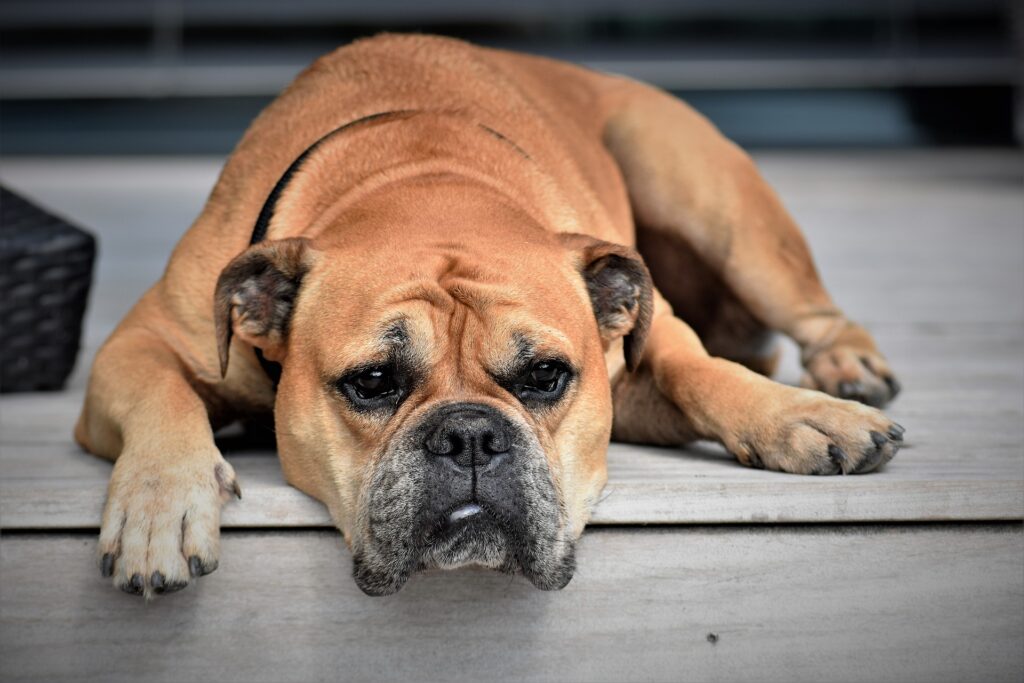Discover why Dogs Have Jowls, what they’re Used For, anatomy of a dog’s jowls and how they play a role in their health and well-being.
The jowls of a dog are the loose, hanging skin around the lower jaw, and they are often the subject of admiration by pet owners.
In this blog post, we will explore why dogs have jowls, what function they serve, and what implications they have for the health and well-being of our furry companions.
The Function of Jowls in Dogs
There are several reasons why dogs have jowls, and each of them serves a unique purpose. Let us examine some of the most common functions of jowls in dogs.
Protection
One of the primary functions of jowls in dogs is protection. Jowls provide a cushioning effect that helps protect a dog’s mouth and teeth from impact during play, hunting, or fighting.
This is particularly important for hunting dogs that may be running through dense underbrush, where they could easily bump their mouths and injure their teeth or gums.
Cooling
Jowls can also help regulate a dog’s body temperature.
Dogs do not have sweat glands like humans do, so they rely on panting and vasodilation to cool down.
Jowls can help with this process by increasing the surface area of the dog’s mouth, which in turn increases the amount of moisture that can evaporate from the dog’s tongue and mouth.
This helps cool the blood vessels in the face and neck, which then circulates throughout the rest of the body, helping to keep the dog cool.
Scent
Dogs rely heavily on their sense of smell to navigate the world around them. Jowls can help capture and hold scent particles, allowing dogs to better detect and follow scent trails.
The loose skin and hair around a dog’s mouth can trap odor molecules, making it easier for the dog to detect and follow scent trails.
Some breeds, such as Bloodhounds and Basset Hounds, have been selectively bred for their scent-tracking abilities, and their large, droopy jowls help capture and hold scent particles.
Communication
Dogs use their body language to communicate with other dogs and humans.
Jowls can play a role in this communication by helping dogs express their emotions.
When a dog is happy or content, their jowls may hang loosely, giving them a relaxed appearance.
Conversely, when a dog is feeling threatened or aggressive, they may tense their jowls, giving them a more intimidating appearance.
Breed-Specific Traits
In some breeds of dogs, such as Bloodhounds and Basset Hounds, jowls are a defining characteristic.
These breeds have been selectively bred for their scent-tracking abilities, and their large, droopy jowls help capture and hold scent particles.
Other breeds, such as St. Bernards and Mastiffs, have large jowls that add to their imposing appearance and make them well-suited for their roles as guardians and protectors.
Health Implications of Jowls in Dogs
While jowls serve several important functions for dogs, they can also present some health challenges.
Dogs with large jowls are more prone to drooling, which can contaminate their environment, cause skin irritation around the mouth, and make them more prone to developing infections.
Additionally, dogs with excessive jowls may be more prone to dental problems, as the loose skin and folds can trap food particles, leading to a buildup of bacteria and plaque.
Some dogs may also develop skin irritation or infections in the folds of their jowls, especially if they are not kept clean and dry.
Owners should regularly inspect their dog’s jowls and keep them clean and dry to prevent irritation and infection.
If an infection does develop, it should be promptly treated by a veterinarian to avoid further complications.
Breeds with large jowls, such as Bloodhounds and Basset Hounds, may also be prone to ear infections due to the excess moisture that can accumulate in their jowls.
Owners should regularly inspect their dog’s ears and keep them clean and dry to prevent ear infections.
FAQs
Q. Do all dogs have jowls?
A. No, not all dogs have jowls. Jowls are more common in certain dog breeds, such as the ones mentioned above.
Q. Can jowls be removed or reduced?
A. While it is possible to surgically remove or reduce jowls in some cases, it is not recommended unless there is a medical necessity. Jowls serve important functions for dogs and are part of their natural anatomy.
Q. Are jowls related to drooling?
A. Yes, jowls can contribute to drooling in dogs. When a dog drools, the saliva can collect in the jowls and cause them to become wet and droopy.
Conclusion
Jowls are a unique and important physical characteristic of dogs that serve several important functions.
They provide protection, help regulate body temperature, aid in scent detection, and contribute to communication and breed-specific traits.
However, they can also present some health challenges, especially if they are not properly maintained.
Owners should be aware of the potential health implications of jowls in their dogs and take steps to keep them clean and dry.
If any signs of infection or irritation develop, owners should seek prompt veterinary care to ensure their dog’s health and well-being.

